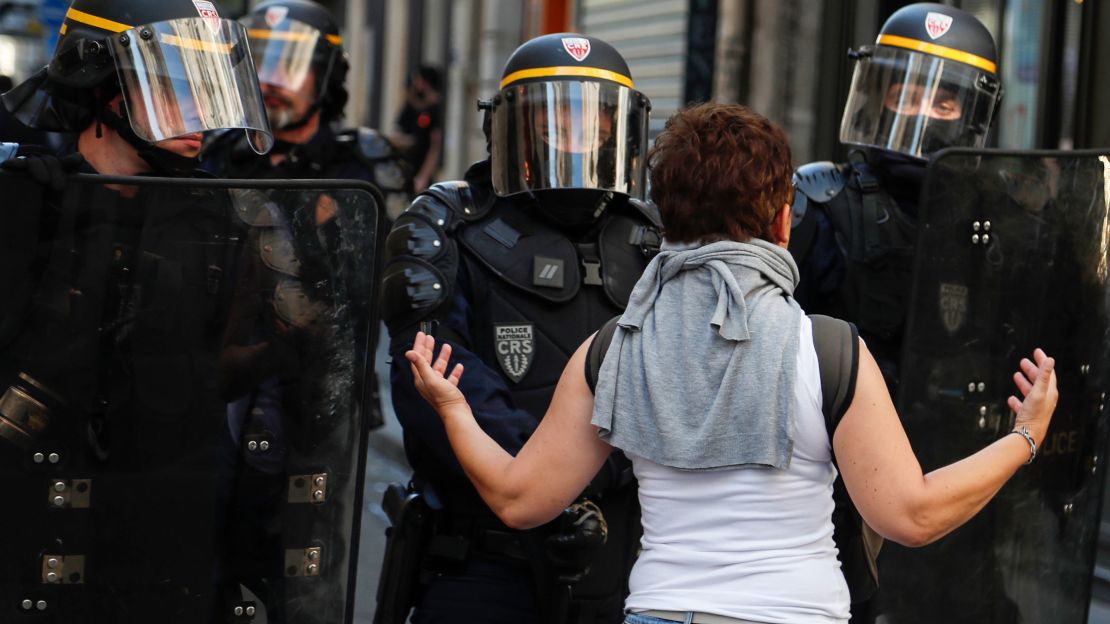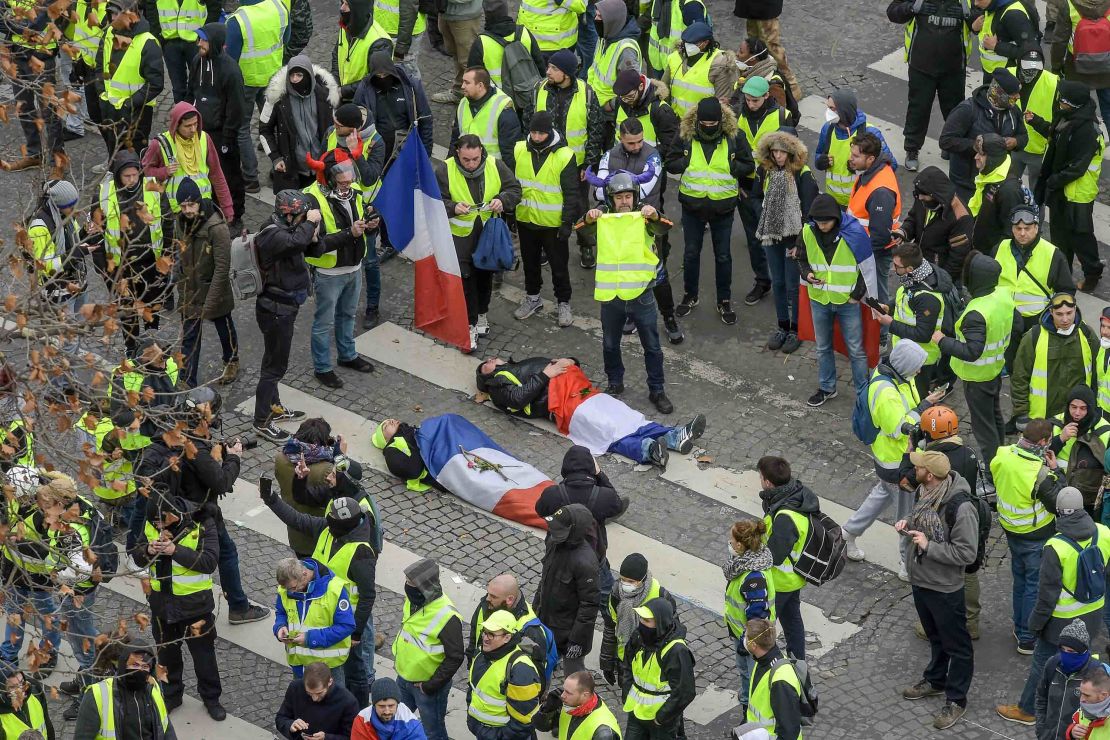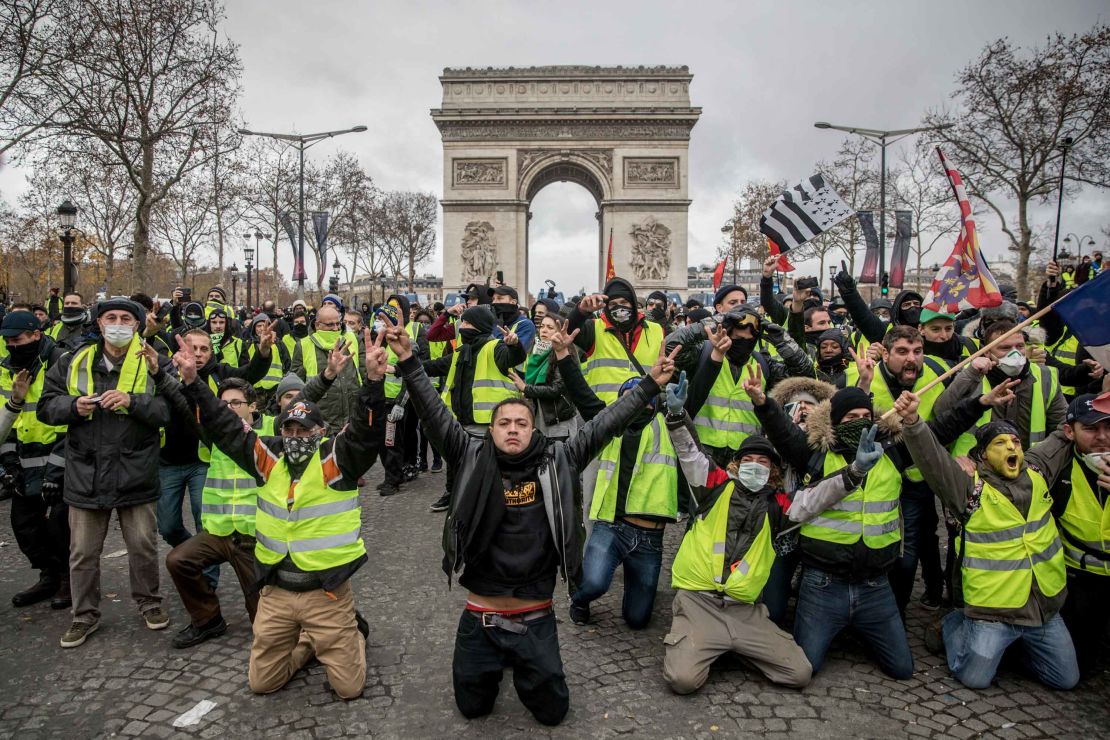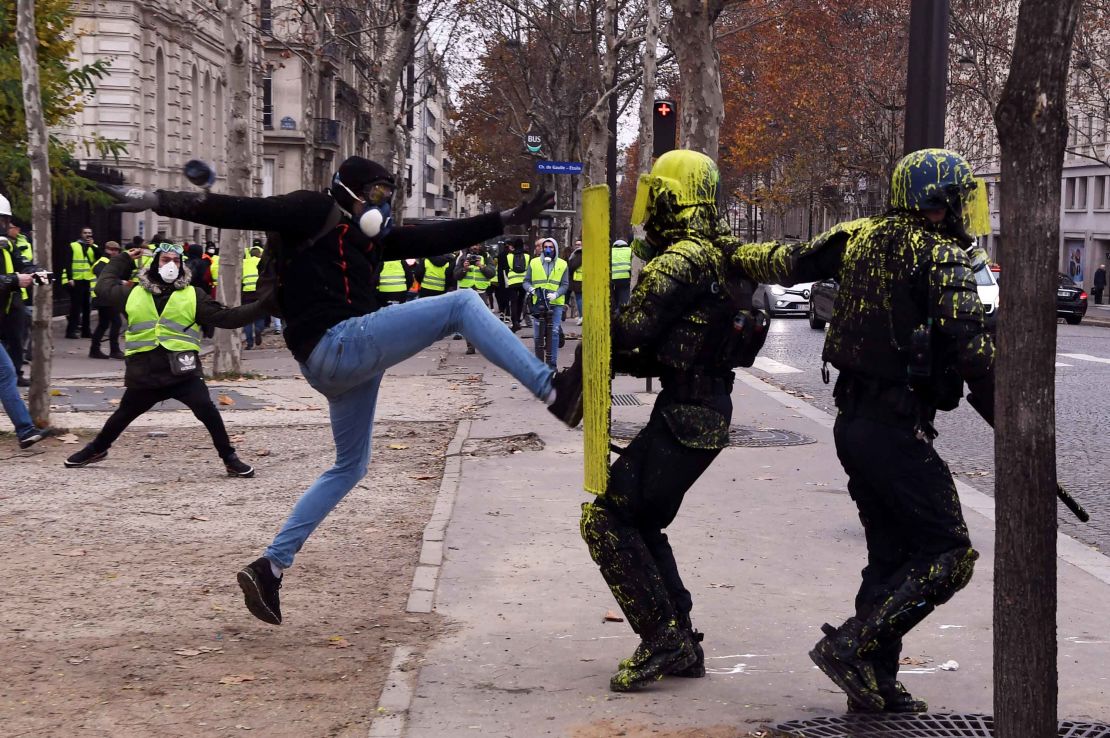In many ways it is hard to believe that France’s gilets jaunes, or yellow vest, movement is only a year old. In that time, it has led to a 10 billion euro ($11.05 billion) aid package for the poorest, changed laws and police tactics, cost the French economy billions of euros and forced a French president whose electoral platform was never to back down in the face of protest, to do just that.
And yet this week sees the first anniversary of a successful popular revolt that appeared to come from nowhere, only to disappear again – but not before achieving many of its initial aims and going on to inspire other leaderless movements elsewhere.
On a sunny Saturday afternoon a year ago, more than 250,000 people headed calls on social media and took to the streets of France wearing the yellow vests that French law obliges motorists to keep in the trunks of their car in case of breakdown. The spark of their anger: a rise in the fuel tax announced by the government in the name of the fight against climate change.

Unheard and unseen
For the worst-off, those struggling to make ends meet outside of France’s largest cities, the tax looked like yet another assault by a disconnected elite not only on their already stretched pocketbooks but also on their dignity.
Some spoke of the lofty concerns of the wealthy about the end of the world taking precedence over the immediately existential fears of the poorest about the end of the month. Others worried that the money from the tax rise would go to the government rather than to the environment. All agreed that it was simply money they could not afford.
As Samy Shalaby, an early yellow vest activist explains: “The problem of this tax is that when you live in the suburbs, when you live in the countryside and you have to go to work maybe one hour from your home, you need to have fuel to put in your car, and it’s very expensive for these people, less expensive for the citizens in big cities because there is public transport – but not in the countryside not in the suburbs.”
Feeling unheard and unseen – their daily struggles absent from the endless political debates that make up so much of French television – the yellow vests took to the streets in anger but also in a mood of rare solidarity and optimism. Here was a movement – with its high-visibility symbol – that would finally bring them and their daily struggles out of the shadows.
That ethos still resonates for gilet jaunes protester Franck Barrenho. “I’m so proud to be a yellow vest. Long life to the yellow vest struggle and we will change the world all together,” he says.
At the roadblocks they set up after that first big Saturday, there was a community spirit combined with a sense of purpose that many people said they were feeling for the first time. Here they finally felt seen and understood – their struggles now at the center of political attention and their daily routine tied to something so much greater than themselves. As at the start of any revolution, it was that initial sense of no longer feeling alone that drove them, spurring them to carry on week after week, even as the winter weather set in.

Optimism turns to rage
Fairly quickly though the movement’s initial optimism turned to anger. By early December, Paris was burning. And every week the police struggled to contain the violence of some of the most radical elements. Drawn from both the far-left and the far-right, many of them seemed equally determined not so much to change policy, as to topple the system itself. At Saturday protests anti-Semitic chants were heard, journalists were brutally targeted and symbols of wealth – from banks to luxury cars – were angrily vandalized.
In the first few weeks of the protest, the police seemed overwhelmed. The government’s many concessions – from the scrapping of the initial tax, to an 10 billion euro package of wage rises and tax relief for the poorest – seemed only to deepen the movement in its determination and to widen the scope of its demands, which went from the canceling of the tax, to the need to fix the high cost of living, to the issue of tackling general inequality.
Week after week, the protest also became much more personal, with chants and placards directed at President Emmanuel Macron himself. By early January and after so many government concessions, the protesters would tell you that nothing short of his resignation would make them go home. As Samy Shalaby explains, “these people needed to have purchasing power to get gas in their car so that’s why the protest began. But after that the people wanted to do more than challenge one tax, they wanted to change the democracy, fiscality, the entire economic model… they wanted to change all the politics of the state.”

Man of the people
And so the French president set out to woo them. Embarking on a tour of France and a sort of national group therapy session, he held, over the course of several weeks, a series of marathon meetings with both local officials and ordinary citizens, to hear their grievances first-hand. The exercise allowed them to vent and him to be seen, shirt-sleeves rolled-up and his demeanor determined, firmly on the side of the people. For a president accused almost from his election, and partly because of his early reform of France’s wealth tax, of being “le président des riches,” the exercise allowed him to try and appear more man-of-the-people than he naturally was.
But much more than dialogue, in the end it was new, controversial anti-riot legislation and tougher police tactics that allowed first for the violence to be contained, and little by little for the movement to lose its momentum.
By spring, the violence was becoming more sporadic and week after week, the numbers on the streets of France dwindled. Slowly the Champs Élysées began to stay open, tourists returned and for a while cities like Paris seems to have two different realities playing out alongside each other on its streets, until, slowly, life got back to normal and the gilets jaunes seemed to disappear.

What was achieved?
One year on, the cost to the economy is difficult to measure. The government reckons that businesses lost 850 million euros in revenue compared to the previous year, while the cost to the state – of repairing damaged infrastructure and funding extra police hours – is estimated at 297 million euros. The human cost meanwhile, according to the interior ministry, stands at 2,400 protesters and 1,800 policemen injured and 11 people killed, mainly in traffic accidents. Yellow vest organizers say 24 people lost an eye.
Given those costs, it’s hard to say what was achieved by the movement, not least among the yellow vests themselves. Samy Shalaby is among the movement’s pessimists.
“It wasn’t a successful movement, we didn’t achieve anything, the government gave us nothing, only law enforcement and violence in the streets. Nothing else. The only positive thing to come out was maybe solidarity between people, more communication between them and more information to understand what’s happening in the world, and in the nation.”

One year on, the yellow vests hope to come back. Encouraged by the rise of leaderless, social-media driven movements elsewhere and riled by Macron’s controversial pension reform, the gilets jaunes have called for a mass protest over the weekend. On Saturday, police in Paris fired tear gas to try to disperse a small number of protesters. It will be an important test for them, not least of that solidarity. But if a recent poll – conducted ahead of this weekend’s anniversary – showed that while 55% of French people back the gilets jaunes, more than six out of 10 do not want the weekly protests to start again.
And with the challenge no longer to Macron’s future but to the movement’s continued existence, the question facing the gilets jaunes this weekend will be the same as it has been every Saturday for much of the last year: how many high-vis jackets can they get out on the streets this time?




